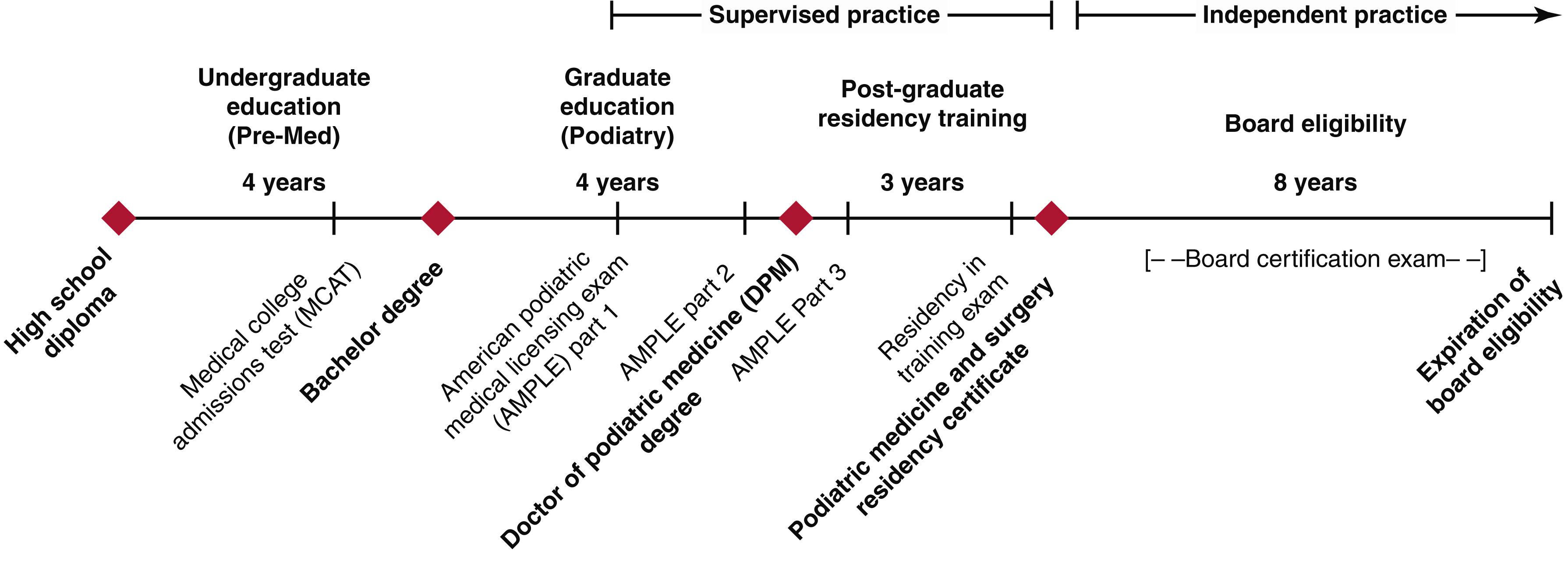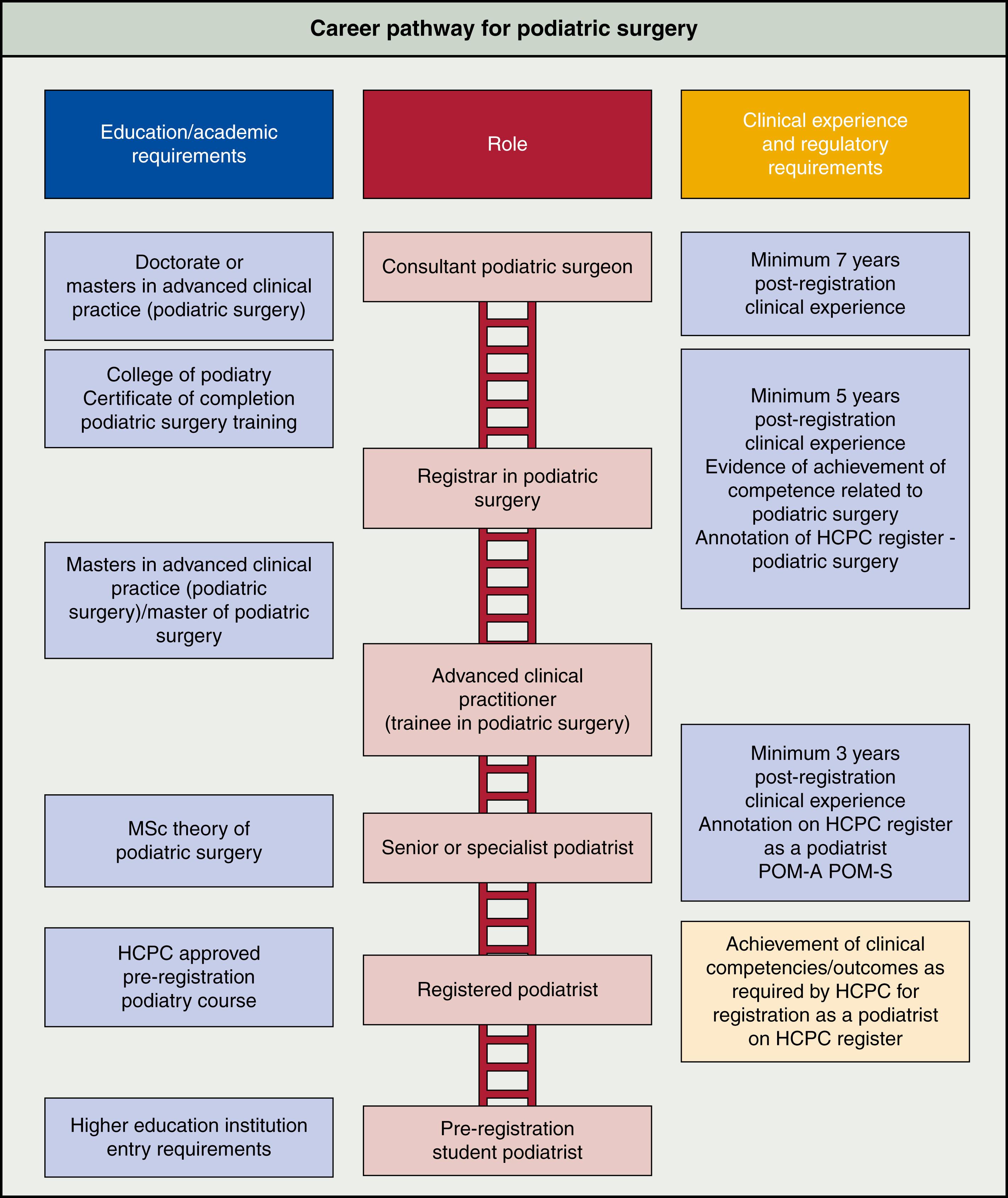Physical Address
304 North Cardinal St.
Dorchester Center, MA 02124
A podiatrist is a clinician who practices medicine and/or surgery of the human foot and ankle. The scope of practice for podiatrists varies by country and even province (in Canada) or state (in the United States). When paired with vascular surgeons, podiatrists are particularly well-suited to augment the long-term medical, surgical, and functional care of the patient with diabetes and an at-risk limb.
Podiatry is both a profession and a specialty of medicine with a rich history. While podiatrist, podiatric physician, or podiatric surgeon are the common monikers in the US, around the world, podiatrists are known by different names, including chiropodists, podologue, podologo. The depiction of specialized foot care dates back to the Egyptians c.2400 bce . Lewis Durlacher, the surgeon-chiropodist to the royal household who served under George IV, William IV, and Queen Victoria, was one of the first to call for a protected profession. Both Napoleon and Abraham Lincoln relied on the services of foot specialists. New York was the first state to license podiatrists in the US in 1895. The Journal of the American Podiatric Medical Association was first published in 1907. Shortly thereafter, the first British journal, The Chiropodist , was published in 1914. One of the profession’s early advocates, William M. Scholl, graduated from Illinois Medical College (now Loyola University) with an MD in 1904. His grandfather was a shoemaker in Germany, and Scholl was appalled by the lack of foot care in the United States. He invented several foot care products, resulting in the creation of a global company that was worth $77 million at the time of his death in 1968.
In the United States, a candidate for podiatric medical school must first complete 4 years of undergraduate training. There are nine colleges of podiatric medicine in the United States, located in New York City, Philadelphia, Miami, Cleveland, Chicago, Des Moines, Phoenix, Oakland, and Los Angeles. Candidates must sit for the Medical College Admission Test (MCAT) to be considered for admission. Podiatric medical school consists of a 4-year program and includes course work in the basic sciences and clinical medicine. Graduates receive the Doctor of Podiatric Medicine (DPM) degree. All states require graduates to complete a residency in order to practice. Podiatric residencies are 3 years long with standardized curriculum and are accredited by the Council on Podiatric Medical Education (CPME). Some podiatrists complete additional fellowship training in diabetic limb salvage, trauma and reconstruction, pediatrics, infectious disease, or research. There are two boards recognized by the CPME to provide certification in podiatry, the American Board of Podiatric Medicine (ABPM) and the American Board of Foot and Ankle Surgery. The ABPM now provides certificates of added qualification for podiatrists who meet certain criteria and pass an examination in amputation prevention and wound care ( Fig. 119.1 ).

The British model of podiatric education predominates in the Commonwealth and Ireland. The minimum education requirement to practice is a Bachelor of Podiatry degree with options to subsequently obtain advanced degrees for specialization. In the United Kingdom the minimum education requirement to practice Podiatric Medicine is a Bachelor of Science degree (BSc). There are 13 universities that offer the degree program. If the applicant already holds an undergraduate degree in health sciences this allows the student to enter into a postgraduate degree Master of Science in Podiatry (MSc) or Doctorate level studies (Doctor of Podiatric Medicine; DPM). Degrees take approximately 3–4 years respectively, except the DPM requires 6 years as the MSc is a prerequisite for the level of study ( Fig. 119.2 ).

Once qualified the newly trained clinician undertakes a 1-year preceptorship which entitles the graduate to undertake minor surgical techniques, administer local anaesthetic, and supply prescription-only medicines. Specialization typically fall into the broad categories of Musculoskeletal, Diabetes & Vascular, Rheumatology & Dermatology.
Practice in the Commonwealth roughly mirrors that of the UK; the British model of podiatric education predominates, requiring a minimum Bachelor of Science degree and professional registration. Australia has recently developed a program more aligned to the United States model, requiring students to have already obtained an undergraduate degree in a scientific or healthcare discipline, culminating in a Doctor of Podiatric Medicine degree. However, this model currently exists in tandem with the British model and the British Podiatric Surgical Pathway training pathway. Canada similarly has two training models, one following a diploma-based model, and one following the United States DPM model. In Canada, considerable differences exist between the two training pathways, with diploma-trained clinicians being restricted to the title, “Chiropodist,” and title Podiatrist being reserved for DPM-trained individuals.
In the United States, the scope of practice for podiatric medicine is determined by state law, which accounts for geographic variations in practice. In most states a podiatrist can complete a history and physical examination, order laboratory work or imaging, and deal with a broad range of medical conditions and their treatment, including prescribing medication, admission to the hospital, and performing surgery. Podiatrists perform partial foot amputations; in a few states they can perform below-the-knee amputations. In many states, podiatrists can harvest their own autologous grafts from areas proximal to the ankle if the graft is to be applied to the foot or ankle, and they can supervise the delivery of systemic hyperbaric oxygen treatments. Privileges to perform what is within a podiatrist’s scope of practice is determined by the facility and its medical staff.
Podiatry practice in the United Kingdom is regulated centrally by the Health and Care Professions Council (HCPC). Practice is standardized across the four devolved nations (England, Scotland, Wales and Northern Ireland) and follows a two tier system, whereby clinicians may be registered as a Podiatrist or a Podiatrist Practicing Podiatric Surgery, depending on level of training and qualification. Podiatric surgeons, being podiatrists who have undergone further training, naturally share a significant portion of the same skills as Podiatrists. However, the UK podiatric surgeon skillset extends to include a wide range of surgical techniques, afforded to them by their extensive training and annotation with the HCPC. Those with a surgical annotation may undertake surgical care encompassing the lower limb. Podiatric surgeons may perform extensive limb salvage work involving the forefoot, rearfoot, and ankle and minor or major amputations, as well as advanced reconstructive approaches in cases of Charcot foot deformities. Podiatrists and podiatric surgeons often work closely with vascular colleagues in the UK, usually side by side in multidisciplinary teams. This symbiotic relationship has led to reciprocal learning, improved patient care and aided in shaping the scope of practice of UK podiatry.
In a fashion analogous to the profession of dentistry, UK podiatrists undertaking surgical practice require rigorous training, which takes a minimum of 10 years in total to complete ( Fig. 119.2 ). Prospective podiatric surgical trainees require a minimum of 1 year clinical experience in general podiatric practice. The completion of a Master’s degree in the theory of podiatric surgery allows the student to apply for a surgical training position within an approved training center. Training positions last a minimum of 3 years and must be accompanied by a Master’s level training in Advanced Clinical Practice. A training post allows podiatrists to apply for a Registrar in Podiatric Surgery; further training and postgraduate education at doctoral level is offered culminating in a DPM degree. Once the student has completed the Registrar period, entitlement for Compulsory Completion of Podiatric Surgical Training (CCPST) can be sought. After a minimum of 10 years’ training, podiatrists may then qualify for the position of Consultant Podiatric Surgeon.
Regardless of location, in practice, the podiatrist and the vascular surgeon often share patients. Podiatrists are trained to perform a clinical peripheral vascular examination and often order and interpret noninvasive vascular studies, which commonly result in referrals to the vascular specialist. They rely on the vascular surgeon for the treatment of impaired wound healing due to ischemic disease or when a patient as a candidate for surgery has marginal or poor perfusion – a frequent occurrence in the care of the diabetic foot.
Become a Clinical Tree membership for Full access and enjoy Unlimited articles
If you are a member. Log in here